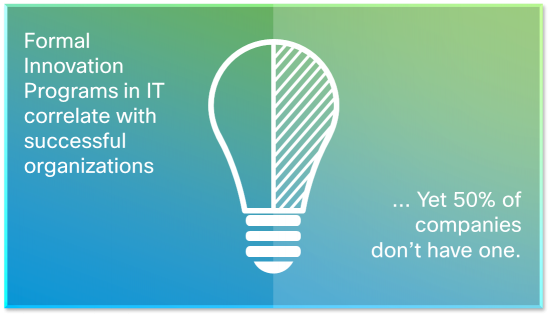 Are you an IT manager feeling the pressure to be “innovative” while still responsible for keeping the lights on? And what does it actually mean to be “innovative” in Enterprise IT? Isn’t it just about the technology?
Are you an IT manager feeling the pressure to be “innovative” while still responsible for keeping the lights on? And what does it actually mean to be “innovative” in Enterprise IT? Isn’t it just about the technology?
Today’s IT managers are not only responsible for making technology decisions, they are becoming increasingly responsible for using the network to deliver on business priorities, help solve business problems, and accelerate growth.
Whether it is headlines such as, “Today’s CIO Needs to Be the Chief Innovation Officer“ from an HBR blog, or the continued threat of Shadow IT, the pressure is on IT organizations to demonstrate their value beyond just “keeping the lights on”.
Recent Gartner reports have predicted that IT organizations will lose 5% of their budget to their respective Lines of Businesses (LOB) annually and that 90% of technology spending will occur outside of IT by 2020.
Why is this spending shift happening? Businesses are facing increasing pressure to move quickly and with more “X as a service” available, a simple credit card can enable instant cloud storage, applications, and even networking in the organization without IT knowledge.
This changeover was the main topic of discussion at the Nemertes 360 Navigator conference in early August. The conference theme was “Innovation in the Age of Enterprise Technology”. Discussions went beyond budget loss to how IT can use technology and processes to create business value within their company – potentially attracting more funding.
Let’s look at what we learned about innovation during this conference:
Innovation works best when there are both technology AND process changes. The iPhone was an innovative product but the ability to quickly and easily download apps from the Apple App Store is what really helped the iPhone achieve its global success. Johna Till Johnson, President and Founder of Nemertes, cited an example from Alexander the Great to further this concept of the need for technology and process to change in tandem. Alexander the Great leveraged a new extra-long weapon, called a sarissa, to gain an advantage during war. But the weapon was easily duplicated by enemies, and alone, didn’t make the difference. It was the flexible battle phalanx formation that Alexander’s troops mastered, combined with the new weapon that led to success on the battlefield.
Successful companies have a formal innovation program in place. When it comes to innovation in the workplace, Nemertes research shows that successful companies have a formal innovation program in place – yet 50% of companies don’t have one. Innovation programs reward employees for coming up with new ideas and pioneering new ways of doing business. Companies who reward innovation stay ahead of and lead the curve; companies who don’t usually end up playing catch-up.
The conference also showcased examples of how different companies built innovation into their IT department’s tight, “keep the lights on” schedules:
- In many cases, the IT team teamed up with a senior level business partner in HR, Marketing or Finance to discuss how to use the network to solve problems. This senior level business partner would then become the sponsor and evangelist for innovation in IT. Nemertes found that 55% of companies have a VP or higher responsible for innovation.
- One financial organization shared a very popular practice at their company called an “Innovation Jam”. For two weeks, the IT organization leaves their normal positions to team up with a business unit to brainstorm and solve a problem using technology. The last Innovation Jam yielded three solutions for the problem and each was implemented and sponsored by the business unit. Now the IT organization has a backlog of motivated IT staff and eager business units to sponsor these sessions ongoing.
Although these are great examples of how IT innovates, there are still challenges:
Complexity: IT managers need to continually stay abreast of new technologies, multiple network transport systems (SP, enterprise network or cloud), multiple devices, explosions of applications, Big Data and analytics in addition to the myriad of technologies that vendors like Cisco provide to them daily. There just isn’t enough time in the day to stay on top of it all and still maintain five 9s reliability.
Operating structure: In this Nemertes report, Robin Gareiss, EVP and Founder of Nemertes Research, says: “IT leaders must define a new operating model that allows for innovation and adapts to the changes in the business climate and in the demand for services. Not only does this shift change the way business leaders view IT, it also alters the organizational structure of IT itself.”
Participants at the conference agreed that one part of IT may need to focus on keeping the lights on, while another group specializes in working closely with business stakeholders to innovate and solve business problems.
What are your experiences with Innovation in IT? What are your challenges in both Innovating and “Keeping the Lights On?” Have you explored how IT can have key role in corporate Innovation? Leave a comment or email me at dpare (at) cisco.com.


CONNECT WITH US